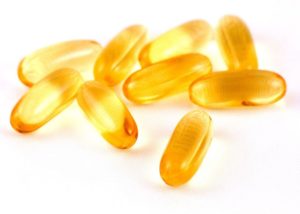 I'm starting to see studies questioning whether some of the beneficial health effects that many attribute to vitamin D may actually be due to sunlight. In the first study, researchers said that sunlight also has low levels of "blue light" which energizes T cells. T cells are a type of white blood cell, are part of the immune system, and help protect the body from infection and cellular abnormalities (cancer). So the blue light in sunlight had a positive effect on the T cells.
I'm starting to see studies questioning whether some of the beneficial health effects that many attribute to vitamin D may actually be due to sunlight. In the first study, researchers said that sunlight also has low levels of "blue light" which energizes T cells. T cells are a type of white blood cell, are part of the immune system, and help protect the body from infection and cellular abnormalities (cancer). So the blue light in sunlight had a positive effect on the T cells.
The second study examined whether it was low levels of vitamin D that is linked to multiple sclerosis (which is the widely accepted medical view) or was it low exposure to sunlight? They found that vitamin D is not associated with multiple sclerosis risk in blacks or Hispanics (but is in whites). But sun exposure is protective in all three racial/ethnic groups (blacks, Hispanics, whites). Thus it was the sunlight that was important in protecting against multiple sclerosis rather than vitamin D. Bottom line: for various beneficial health reasons, go out in sunshine frequently (20 minutes a day is fine). Remember, sunlight is the "natural source" for vitamin D (the ultraviolet light hitting our bare skin allows us to make vitamin D).
From Dec. 2016 in Science Daily: Sunlight offers surprise benefit: It energizes infection fighting T cells
Sunlight allows us to make vitamin D, credited with healthier living, but a surprise research finding could reveal another powerful benefit of getting some sun. Georgetown University Medical Center researchers have found that sunlight, through a mechanism separate than vitamin D production, energizes T cells that play a central role in human immunity.
Their findings, published today in Scientific Reports, suggest how the skin, the body's largest organ, stays alert to the many microbes that can nest there. They specifically found that low levels of blue light, found in sun rays, makes T cells move faster -- marking the first reported human cell responding to sunlight by speeding its pace.
"T cells, whether they are helper or killer, need to move to do their work, which is to get to the site of an infection and orchestrate a response," Ahern says. "This study shows that sunlight directly activates key immune cells by increasing their movement."
"We know that blue light can reach the dermis, the second layer of the skin, and that those T cells can move throughout the body," he says. ...."We found that sunlight makes hydrogen peroxide in T cells, which makes the cells move. And we know that an immune response also uses hydrogen peroxide to make T cells move to the damage," Ahern says. "This all fits together." Ahern says there is much work to do to understand the impact of these findings, but he suggests that if blue light T cell activation has only beneficial responses, it might make sense to offer patients blue light therapy to boost their immunity.
From Medscape: Is It Time to Rethink Low Vitamin D as a Contributor to MS?
The idea that vitamin D deficiency may contribute to multiple sclerosis (MS) has been well established in the literature and has, for the most part, been etched into recent neurology dogma. Yet, research by Annette Langer-Gould, MD, PhD—a clinical assistant professor at the University of Southern California's Keck School of Medicine in Los Angeles—suggests that the association might not be that simple. ....As background, the vitamin D–multiple sclerosis hypothesis originated from the observation that the prevalence of MS increases with increasing distance from the Equator, as ultraviolet radiation (UVR) from the sun becomes less intense. But this is also where more white people live.
The main result of our study is that vitamin D is not associated with MS risk in blacks or Hispanics, regardless of genotype. In contrast, sun exposure is protective in all three racial/ethnic groups.

 A recent study looking at high dose supplementation of vitamin D found that it did not prevent cardiovascular disease. This study came about because of earlier studies observing that there is a higher incidence of cardiovascular disease in persons with low vitamin D levels (as measured in their blood). But such results from observational studies need rigorous testing in studies where people are randomly assigned to groups, and that are "double-blind" (no one knows who is getting the vitamin D until the end of the study) to eliminate bias. And this is what was done in this study, with the result that monthly high doses of vitamin D3 for 3 years did not prevent cardiovascular disease (including stroke, heart attacks, hypertension, etc) - as seen in that there were no group differences between the vitamin D and placebo groups. Finding no effects are "
A recent study looking at high dose supplementation of vitamin D found that it did not prevent cardiovascular disease. This study came about because of earlier studies observing that there is a higher incidence of cardiovascular disease in persons with low vitamin D levels (as measured in their blood). But such results from observational studies need rigorous testing in studies where people are randomly assigned to groups, and that are "double-blind" (no one knows who is getting the vitamin D until the end of the study) to eliminate bias. And this is what was done in this study, with the result that monthly high doses of vitamin D3 for 3 years did not prevent cardiovascular disease (including stroke, heart attacks, hypertension, etc) - as seen in that there were no group differences between the vitamin D and placebo groups. Finding no effects are "